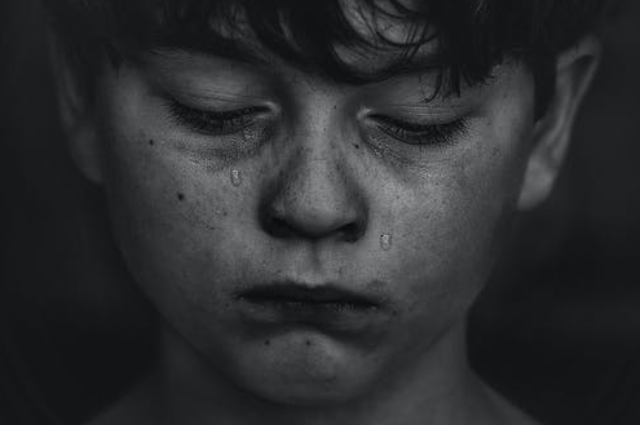One bond that comes into everyone's mind when considering the most indestructible relationship among all species is the one with one's parents. The love of our parents is selfless, limitless, and unconditional, which is only realized by an individual when he/she becomes a parent themselves. However, it is unimaginable that certain creatures, such as Sloth bears, felines, canids, and a variety of rodent species, etc., sometimes eat their babies!
To be clear, they do not act insensitively; they only do so when their newborn cub is sick, malformed, or when they do not have enough food for them to eat. But picture this in the case of humans, even though their closest relatives, chimps, gorillas, and bonobos, do the same thing in certain situations. What about humans?
Humans do not eat their babies, but sometimes due to the sensitivity of the situation during pregnancy, they are occasionally compelled to make decisions compared to those made by their closest relatives. However, these close relatives, particularly the mothers of chimpanzees, gorillas, bonobos, etc., provide a wonderful example of motherhood by doing everything they can to keep their child safe and sound. Some studies have also discovered that chimpanzees and gorilla mothers play an important part in their offspring's life transition by defending them during disputes with older males and providing comfort through touch. The same is true for humans, but when you witness the instances of child abuse, which are increasing all the time yet still go unnoticed, it poses a serious concern.
What about child abuse, though? Humans have the most prolonged pregnancies, lasting around 38-40 weeks, resulting in an unbreakable bond between parents and their children. However, reading about child abuse makes me question why, despite this strong bond, many children are subjected to child abuse in their families regularly.
Child abuse in layman’s language refers to any mistreatment or harm committed by the child’s parents or any other person. The various forms of violence against children includes physical violence (slapping, beating with implements like a stick, belts, rods) verbal abuse (blaming, criticizing, shouting, use of abusive language): witnessing physical violence (towards one parent, towards siblings, outside the family) and emotional abuse (denying food, discrimination). The consequences of these assaults are severe, including bruises, marks, bone fractures, and, in extreme cases, death. It can occur in various settings, including homes, schools, orphanages, workplaces, etc. The children are the treasures of the country's future and thus, it is the duty of every person surrounded by children to make sure about their proper development.
In a developing country like India, with drastic economic disparity, the issue of child abuse is not taken as seriously as in the Western world. In the poor villages and slum areas, the children are exposed to child abuse regularly, with domestic violence, drug addiction, and illiteracy making the situation more complex and worse. However, this is not restricted to just the economically poorer section of the society as many youngsters in the majority of middle-class Indian households are continually exposed to this type of atmosphere. Still, their parents are oblivious of the influence it might have on their children.
Child abuse in India is not taken seriously and considers a personal matter. For an instance, if a child receives bad grades in examinations, they are always concerned about how their parents will react. In certain cases, it has also been discovered that receiving fewer points or committing mistakes, etc. leads to abuse in the form of beating since they believe it is the best alternative to ensure that their child does not repeat it. The mistake may not be repeated, but the child's trust or attachment with their parents may be shattered. The question is whether this unbreakable bond is shattered when parents raise their hands or beat their children to teach them appropriate behavior. YES, I think so!
According to a report by the Ministry of Women and Child Development (MWCD), 2007, it has been found that girls below the age of 18 years have been more exposed to child abuse. As per the anthropological lens, one reason could be that the prevalence of gender discrimination in India still exists or another reason could be that girls stay in homes more as compared to boys. The abuse was most common in children's homes, where it was often committed by parents. Violence, in whatever form, has a profound influence on a child's whole development, resulting in real or potential harm to the child's health, survival, development, and dignity. As a result, there is a need for education and therapy, as child abuse is a violation of a child's basic human rights.
Child abuse has profound consequences, according to the World Health Organization (WHO), since it may harm a child in the long run, increasing the risk of behavioral, physical, and mental health issues such as depression, alcohol, and drug addiction, smoking, and so on. Moreover, studies found that prolonged exposure to child abuse increases the risk of emotional and mental health issues like anxiety and depression. It is not wrong to say that everyone reading this article has got a “maa ke hath a thapad”. In India, being humiliated by parents in front of relatives, or sometimes even by the relatives, receiving a slap in a market or on a busy road, embarrassed for not fitting into the gender roles ideology, etc. are all commonly found in every occasion, festivals, etc. that also psychologically affects the child. However, because they are ubiquitous, these issues are unrecognizable and are not given much attention. Thus, there is a need to increase awareness about child abuse and take further actions, or else this issue will affect children in the long term.
Child abuse may be prevented even before it occurs by implementing effective prevention strategies such as supporting parents and teaching good parenting skills, as well as improving laws prohibiting harsh punishment and programs to educate parents about the issue.

